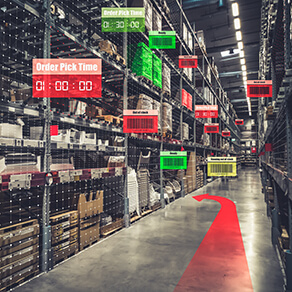
Using AR to Enhance Manufacturing Processes
Rarely used as recently as five or six years ago, augmented reality (AR) has emerged as a technology with the potential to transform manufacturing. Unlike virtual reality, which immerses the user in a fully virtual environment, AR overlays digital imagery onto your physical surroundings — typically through the use of a headset or AR glasses.
AR provides visual cues and real-time information that can streamline and improve a variety of manufacturing processes and operations. Here are a few of the many ways AR can revolutionize manufacturing.
Efficient Training
One of the biggest challenges facing manufacturers today is a shortage of skilled workers. AR technology can enhance the training process by creating a fully immersive training environment that’s far more efficient than training manuals and similar materials. By pointing out components of sophisticated equipment and demonstrating complex tasks in a realistic setting, AR has the potential to train workers in a quarter of the time conventional methods take.
AR isn’t just a bonus for your existing workforce. It can also help attract new workers, especially younger people who seek experience with cutting-edge technologies.
Speedier Maintenance
Maintenance of costly manufacturing machinery is another area that can benefit from AR. Newer AR technology, combined with sensor data and realtime analytics, can greatly enhance preventive and predictive maintenance.
For example, AR glasses can use three-dimensional arrows to pinpoint machine components and display real-time data — such as temperature, vibration rates, and maintenance histories and trends. This allows workers to quickly identify and address potential failure points before a machine breaks down.
Simpler Assembly
AR technology can significantly improve the efficiency of complex assembly processes by providing workers with visual instructions. For instance, AR can superimpose spatial markers over objects and provide instructions through the AR viewer.
This technology allows workers to perform complex tasks more quickly and accurately. The result is reduced error rates.
Make the Transformation
These are just a few examples of the many ways AR technology is transforming manufacturing. It can also be invaluable in product design and development, logistics management, customer support, quality control, and workplace safety management. Contact our firm to help you evaluate the potential costs and benefits of implementing this technology at your company.
